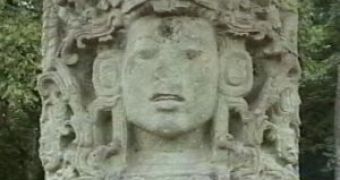Maya was the most developed pre-Columbian culture in the Americas. Maya people developed the only fully developed written system amongst those cultures. Maya civilization achieved spectacular and monumental architecture, advanced mathematical and astronomical systems.
This civilization boomed after the fading of the Olmec civilization and reached its peak between 250 and 900 AD. Magnificent stone sculptures of this Classic Maya civilization remained and fascinate scientists and public alike.
Scientists have long supposed what they might represent. Takeshi Inomata (University of Arizona) believes that the carvings depict images of public performance played by rulers. In other words, they present a kind of political theater.
Inomata noticed that Mayan cities were planned to compass plazas, extensive meeting places, and on the sides of the plazas there were placed these stone monuments. The gathering spaces were huge, enabling them to encompass a substantial part of the kingdom's population.
Mayan kings, as depicted in the carvings, wore ostentatious headdresses made of quetzal bird feathers and elaborate costumes, and danced in these plazas in front of their subjects. "These mass spectacles were occasions in which the general populace shared the experience of witnessing rulers engaged in culturally charged ritual performances," explains Inomata.
However, this also meant that rulers were under constant evaluation by their subjects. "Large-scale theatrical events gave physical reality to a community and helped to ground unstable community identities in tangible forms through the use of symbolic acts and objects", Inomata writes.
"The centrality of rulers in communal events suggests that the identities of a Maya community revolved around the images of supreme political leaders. ... Large gatherings also gave the elite an opportunity to impose their ideologies and cultural values on the rest of society through performances."
But this way the kings were constantly under the check of the population. Despite all this sophisticated political organization, Maya civilization saw a decline. At the arrival of the Spanish conquistadors they were divided amongst many small kingdoms but this fact made more difficult their conquest.
Unlike Inca or Aztec Empires, which fell with the overthrown of their central political power, Maya territories took almost two centuries to be conquered by the Spanish.

 14 DAY TRIAL //
14 DAY TRIAL //